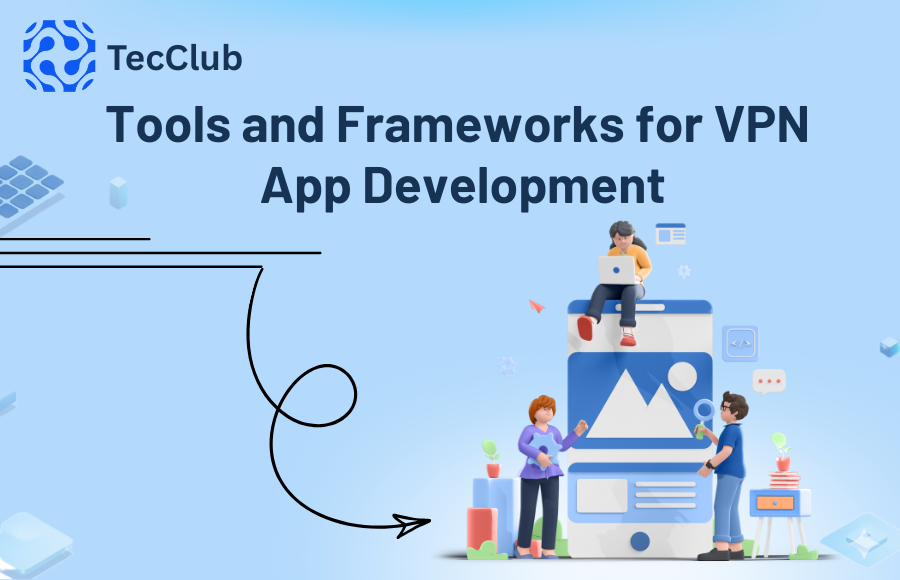
When you hit “connect” on a VPN app, it looks simple. One tap and you’re safe, right? But behind that little button is a surprisingly complex system keeping everything running—protocols for encryption, servers across the globe, APIs to authenticate users, and a clean app interface to tie it all together.
If you’re thinking of building a VPN app, here’s the truth: it’s not just about code. It’s about choosing the right building blocks so your app feels fast, trustworthy, and effortless to use. Let’s break it down.
A VPN lives and dies by the protocol it uses. Think of protocols as the rulebook for how data is encrypted and sent.
OpenVPN – The old reliable. Battle-tested, flexible, and secure.
WireGuard – The new favorite. Lightweight, crazy fast, and ideal for mobile.
IKEv2/IPSec – Super stable, especially when your phone switches between Wi-Fi and 4G.
L2TP/IPSec – Kind of the “grandpa” protocol. Still useful for compatibility, but fading out.
👉 These days, most modern VPNs lean heavily on WireGuard for speed and OpenVPN for compatibility.
Your backend is where the heavy lifting happens: managing logins, subscriptions, and server assignments. Without it, your shiny app is just an empty shell.
Laravel (PHP) – Great for subscription systems, APIs, and admin dashboards.
Node.js – Handles real-time connections like a champ.
Django (Python) – Rock-solid and secure, perfect for enterprise setups.
Pick one based on your team’s strengths. The key is scalability—because if your app takes off, you’ll need to grow fast.
The app is the part your users see and judge you by. If it feels clunky, they’ll delete it, no matter how secure it is.
Flutter – Write once, launch on Android and iOS. Huge time-saver.
Swift – Native iOS apps with buttery-smooth performance.
Kotlin/Java – Native Android apps with direct access to VPN APIs.
Most VPN startups go with Flutter to get moving quickly, then polish with native code as they scale.
Servers are your engine room. No servers = no VPN.
Cloud Providers: AWS, DigitalOcean, Vultr for global coverage.
Load Balancers: Nginx, HAProxy to keep traffic flowing.
Monitoring Tools: Grafana, Prometheus so you know when things break (before your users do).
Think of your backend as the cockpit and your servers as the engines. If either fails, you’re grounded.
Here’s where trust is won or lost. Users rely on you to keep their data safe.
OpenSSL – The go-to for SSL/TLS encryption.
WireGuard SDK – Makes integration with mobile apps easier.
Libreswan/StrongSwan – Trusted tools for IKEv2/IPSec.
Skip this part, and you don’t have a VPN—you just have a risky proxy.
People judge apps in seconds. If your VPN looks shady, they won’t trust it.
Figma – Collaborative design at its best.
Adobe XD / Sketch – For polished layouts and wireframes.
Material UI Guidelines – To keep Android and iOS designs consistent.
Keep it clean and simple. A giant connect button, clear status (“Connected” / “Disconnected”), and maybe a map of servers is often all users want.
VPN apps touch so many moving parts—networks, devices, payment systems—you can’t afford sloppy testing.
Wireshark / Charles Proxy – Sniff out traffic issues.
Android Studio Profiler / Xcode Instruments – Spot lag or battery drains.
Appium / Selenium – Automate testing across devices.
A VPN that drops connections or leaks data? Dead on arrival.
Finally, you need to get paid. Most VPNs run on subscriptions, so payment integration is critical.
Stripe / PayPal – Simple, trusted, global.
Google Play Billing / Apple In-App Purchases – Mandatory if you’re in app stores.
Razorpay / Braintree – Useful for certain markets.
If payments are buggy, users will cancel. It’s that simple.
Building a VPN app isn’t about cobbling together random tools—it’s about creating a system where speed, security, and simplicity all work in harmony.
The right stack—say, WireGuard + Laravel + Flutter + AWS—can help you launch faster and scale with confidence. The wrong stack? That’s just frustration for you and your users.
At the end of the day, users don’t care about your backend framework or protocol acronyms. They care about trusting you with their privacy. Nail that, and you’ve got a winning VPN.
✅ Quick VPN Dev Checklist
Protocol: WireGuard / OpenVPN
Backend: Laravel / Node.js / Django
Frontend: Flutter / Swift / Kotlin
Servers: AWS / DigitalOcean
Security: OpenSSL / StrongSwan
Design: Figma / Material UI
Payments: Stripe / In-App Billing